ו׳ מרחשון ה׳תשפ״ה | November 7, 2024
New Feature Exhibits Historical Parsha Sites
Anash.org is proud to announce a weekly feature called ‘Picturing the Parsha’ throughout the weeks of Sefer Bereishis. The new column, will show photos with captions of ancient sites mentioned in the parsha, by Tanach explorer and photographer Sholom Raskin.
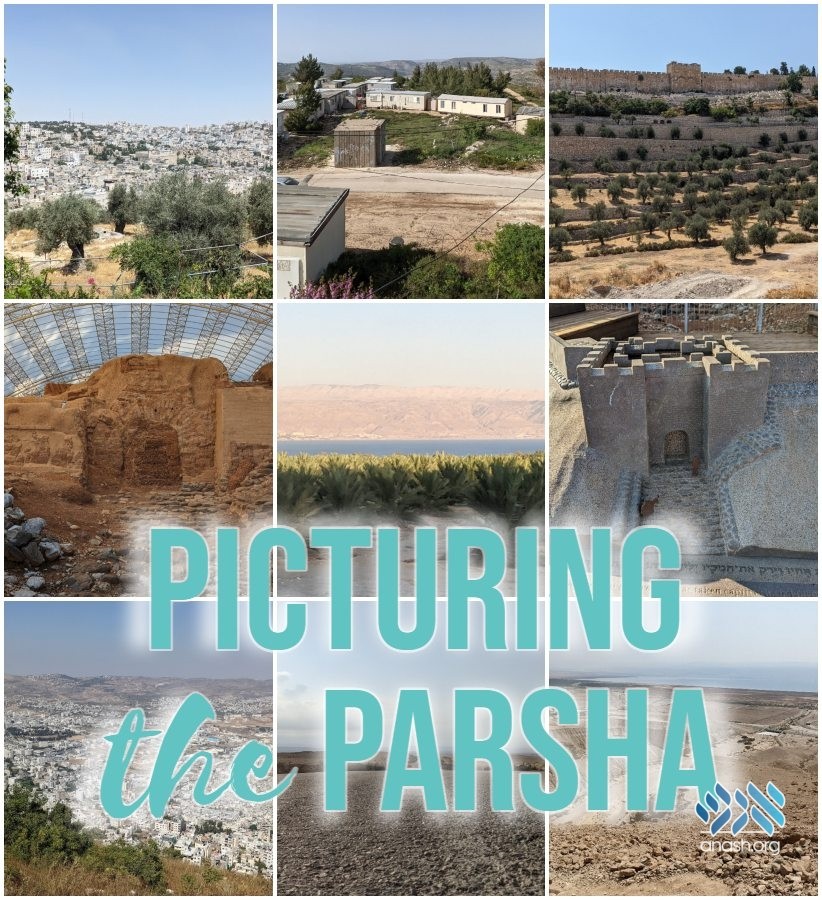
Anash.org is proud to announce a weekly feature called ‘Picturing the Parsha’ throughout the weeks of Sefer Bereishis. The new column, will show photos with captions of ancient sites mentioned in the parsha, by Tanach explorer and photographer Sholom Raskin.
By Anash.org reporter
A weekly column on Anash.org called ‘Picturing the Parsha,’ which will feature throughout the weeks of Sefer Bereishis, will show photos with captions of ancient sites mentioned in the parsha.
The unique photo documentary is being prepared and presented by Tanach explorer and photographer Sholom Raskin. Sholom, who studied in Eretz Yisroel, was fascinated to encounter the real-life locations of the stories from Tanach he learned growing up. During his time there, he intensely explored hundreds of historical and archeological sites and documented it all.
“I grew up learning from the words written in the Torah,” Sholom told Anash.org, “so when I came to Eretz Yisrael, it was the first time that I was able to visualize the words that I had learned growing up. I spent all my free time exploring as many places as I could that are a part of Jewish History.”
An online travel guide he created, SholomTravels.com, contains a spreadsheet of places where they are mentioned in Tanach; 115 locations based on tiers, location in Eretz Yisroel, archaeology, history, nature, and viewpoints; an interactive Google Maps page; as well as hundreds of pictures and videos.
His newest project, ‘Picturing the Parsha,’ will show viewers pictures of locations mentioned in that week’s Parsha. Under each picture, there will be a caption with the Perek and Posuk that is being referenced and a short explanation of what the picture is about.
A printable PDF allows for easy printing of the photos and descriptions for reading on Shabbos and showing it at the Shabbos table. Click here to download the PDF.
*
List of places in parshas Lech Lecha:
12:6 – The city of Shechem, (about 30 miles north of Yerushalayim), is located in the valley below. Elon Moreh, is located on the mountain in the center left of the picture.
13:10 – Residents of Kibbutz Kalya (which is an agriculture Kibbutz about 15 miles east of Yerushalayim), raise date palm trees in this region. Behind the trees is the Yam Hamelach, and then Jordan.
13:14/15 – View from the observation deck in Beit El (about 11 miles north of Yerushalayim). This is approximately the view that Avraham Avinu would have seen. South of Beit El is Ramallah, and after that is Yerushalayim. The bottom picture; on a clear day you can see the Tel Aviv area (the day I took this picture it was not very clear)
13:18 – The City of Chevron (about 17 miles southwest of Yerushalayim), Meoras Hamachpela is in the center of the picture. To the left of the picture, further past the hill, is Elonei Mamre.
14:3 – View from Qumran (about 14 miles east of Yerushalayim, this is where the Dead Sea Scrolls were discovered) of the Yam Hamelach area.
14:14 – This is the second oldest city arched gate entrance in the world, at approximately 3700 years old! It was discovered in Tel Dan (about 20 miles northeast of Tsfas, next to the Lebanon border) and dates to the time period of Avraham Avinu. It is possible that Avraham Avinu used this exact entrance when passing by the city of Dan. As such, the gate is nicknamed “Abraham’s Gate”. — Above; “Abraham’s Gate”. — Below; A reconstruction of what the gate looked like.
14:17 – This is the Kidron Valley where Melchizedek met Avraham Avinu. The city of Shalem was conquered by David Hamelech and renamed Yerushalayim. Above; Commemorating what occurred in this location. — Below; the Kidron Valley is below the Eastern Wall of the Har Habayis (You can see Shushan Gate).
16:7 – Approximately in the area of “on the way to Shur”. This road leads to Shivta (about 25 miles south of Beer Sheva), which is near that ancient roadway.
16:14 – View from the Egyptian border. Approximately 20 miles in that direction, across the border, is the city of Kadesh Barnea (this picture was taken about 25 miles south of Rafah)
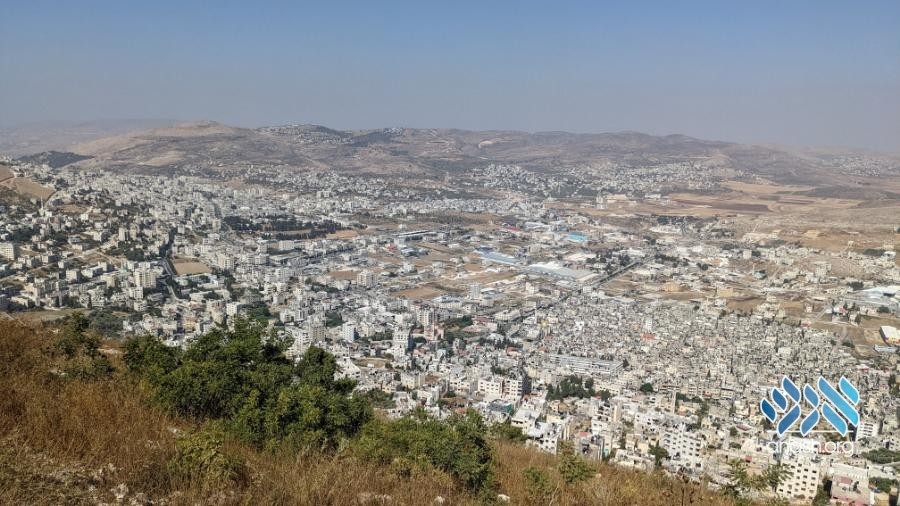
12:6 - The city of Shechem, (about 30 miles north of Yerushalayim), is located in the valley below. Elon Moreh, is located on the mountain in the center left of the picture.
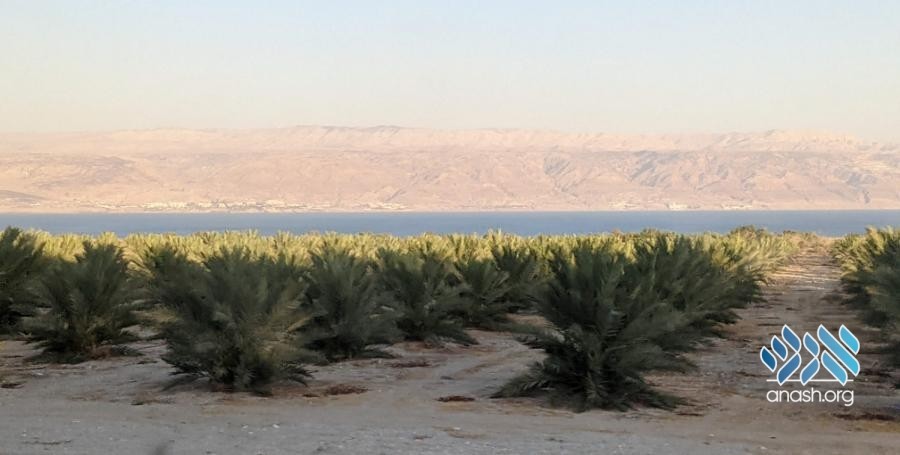
13:10 – Residents of Kibbutz Kalya (which is an agriculture Kibbutz about 15 miles east of Yerushalayim), raise date palm trees in this region. Behind the trees is the Yam Hamelach, and then Jordan.
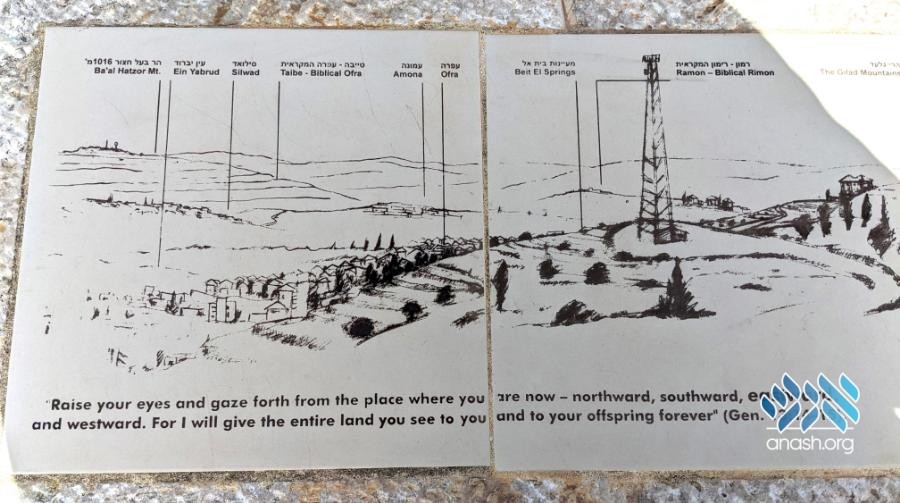
13:14/15 - View from the observation deck in Beit El (about 11 miles north of Yerushalayim). This is approximately the view that Avraham Avinu would have seen. South of Beit El is Ramallah, and after that is Yerushalayim.
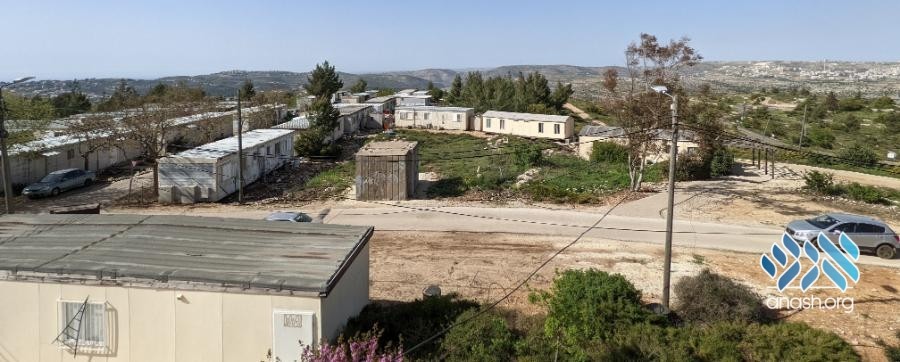
13:14/15 - View from the observation deck in Beit El (about 11 miles north of Yerushalayim). This is approximately the view that Avraham Avinu would have seen. South of Beit El is Ramallah, and after that is Yerushalayim.
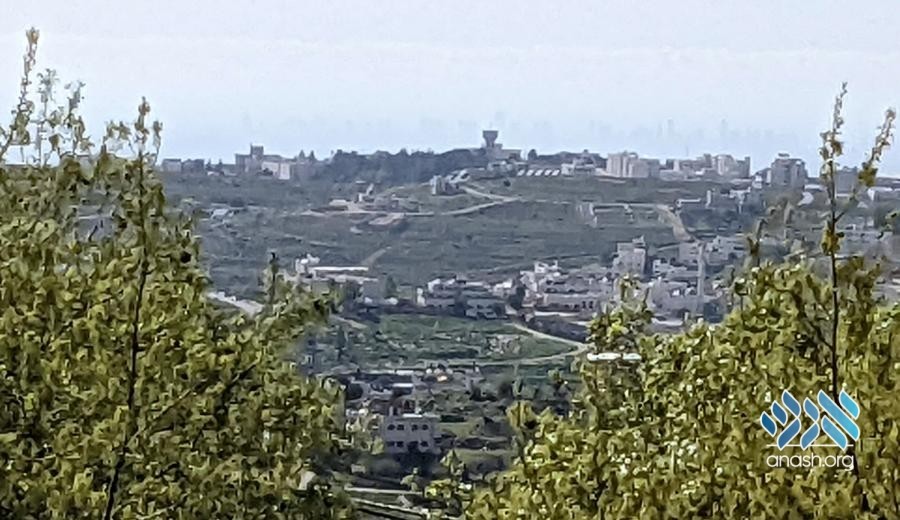
13:14/15 - View from the observation deck in Beit El (about 11 miles north of Yerushalayim). This is approximately the view that Avraham Avinu would have seen. South of Beit El is Ramallah, and after that is Yerushalayim. On a clear day you can see the Tel Aviv area (the day I took this picture it was not very clear).
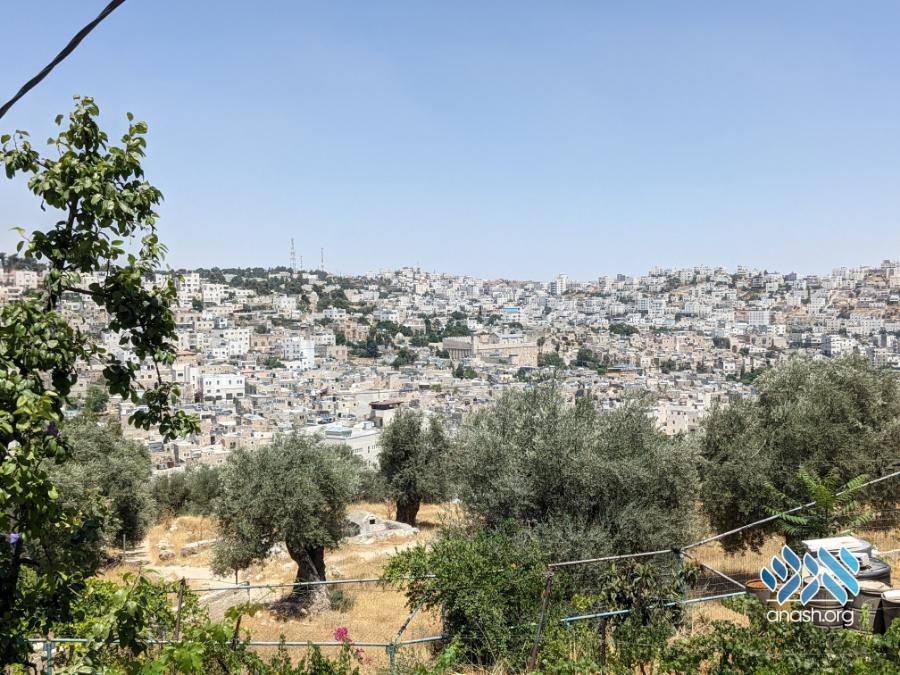
13:18 – The City of Chevron (about 17 miles southwest of Yerushalayim), Meoras Hamachpela is in the center of the picture. To the left of the picture, further past the hill, is Elonei Mamre.

14:3 – View from Qumran (about 14 miles east of Yerushalayim, this is where the Dead Sea Scrolls were discovered) of the Yam Hamelach area.
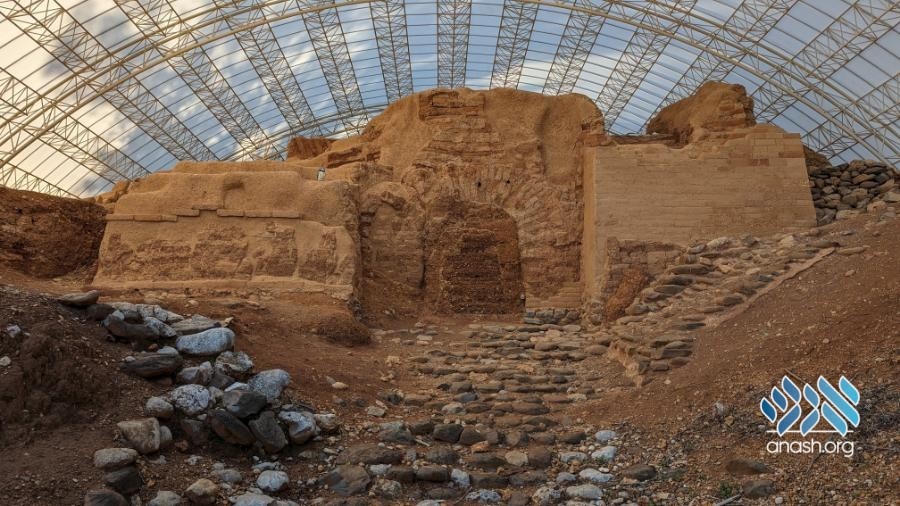
14:14 – This is the second oldest city arched gate entrance in the world, at approximately 3700 years old! It was discovered in Tel Dan (about 20 miles northeast of Tsfas, next to the Lebanon border) and dates to the time period of Avraham Avinu. It is possible that Avraham Avinu used this exact entrance when passing by the city of Dan. As such, the gate is nicknamed “Abraham’s Gate”.
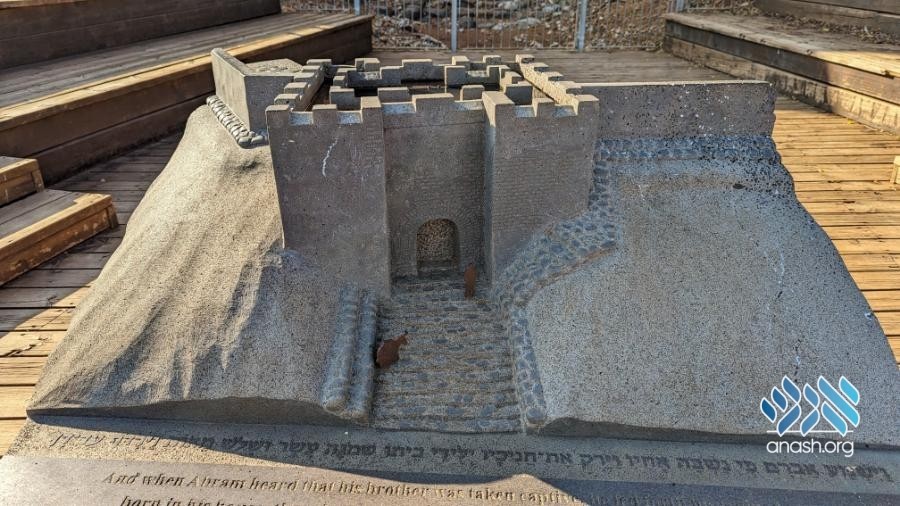
A reconstruction of what the gate looked like.
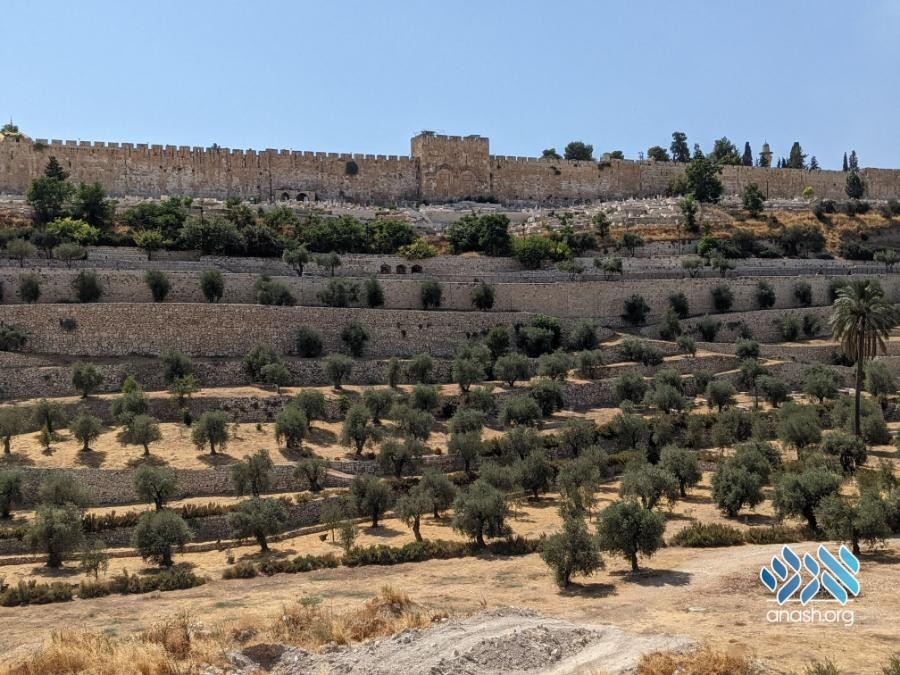
14:17 – This is the Kidron Valley where Melchizedek met Avraham Avinu. The city of Shalem was conquered by David Hamelech and renamed Yerushalayim. Above; the Kidron Valley is below the Eastern Wall of the Har Habayis (You can see Shushan Gate). Below; Commemorating what occurred in this location.
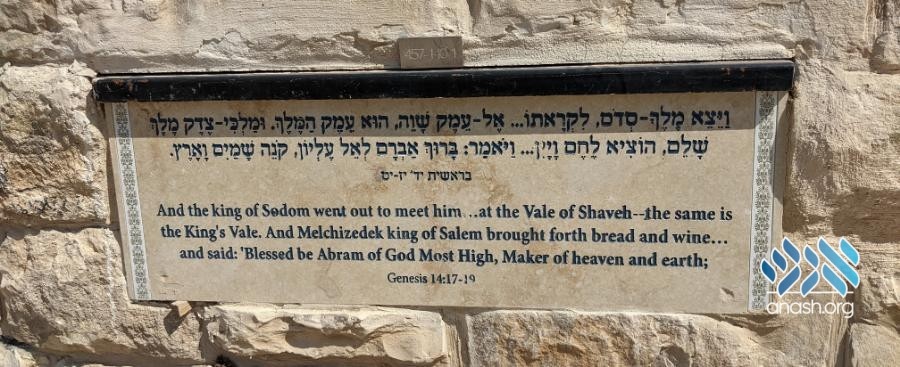

16:7 - Approximately in the area of “on the way to Shur”. This road leads to Shivta (about 25 miles south of Beer Sheva), which is near that ancient roadway.

16:14 – View from the Egyptian border. Approximately 20 miles in that direction, across the border, is the city of Kadesh Barnea (this picture was taken about 25 miles south of Rafah)

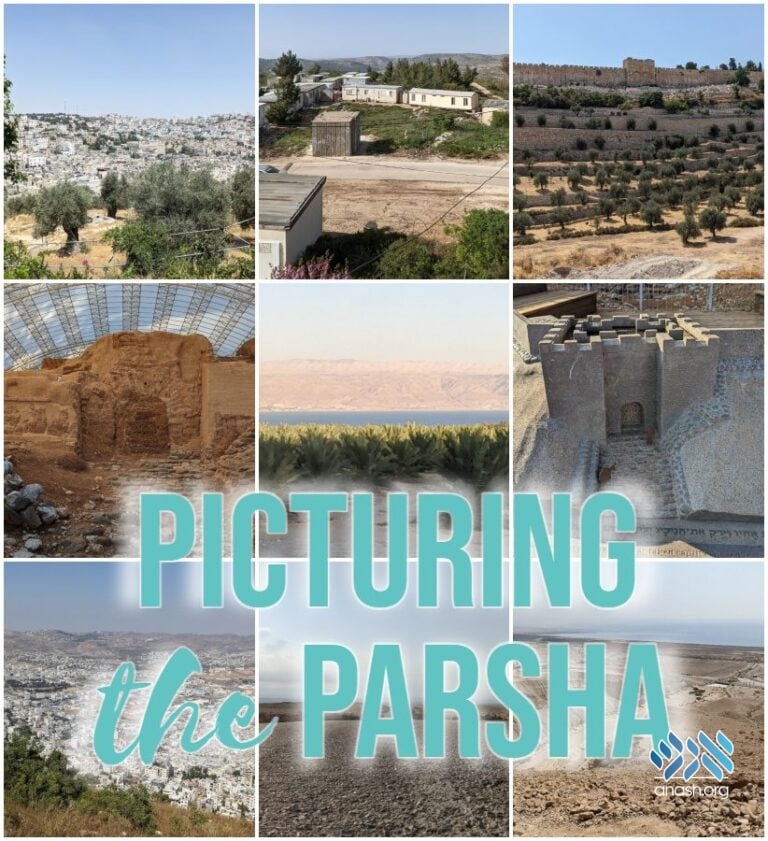
Thank you for bringing the Sedra to life.
Beautiful job! I’ve looked on Google maps for some of these places and they are not posted. Thank you for your pictures and descriptions.
Looking forward to learning!
https://www.google.com/maps/d/viewer?mid=12W_5bso86v6eHeSgR3D-ghYIwWo&ll=34.821136626150775%2C41.85508279999999&z=7&hl=he
It always annoys me when i learn about the places in torah which i dont know where and what it is.
This is a great work!